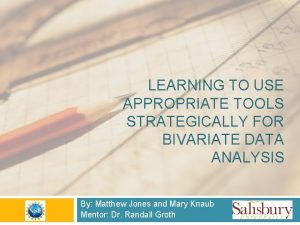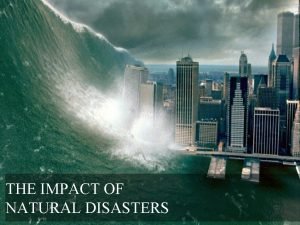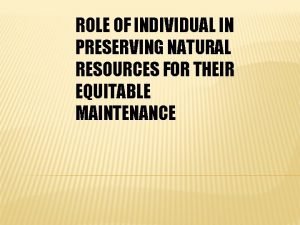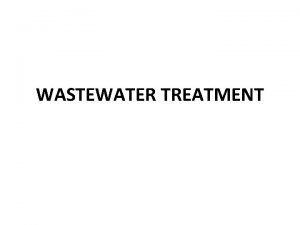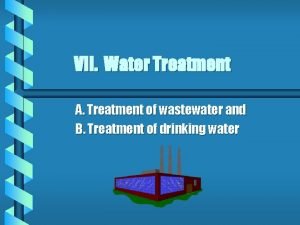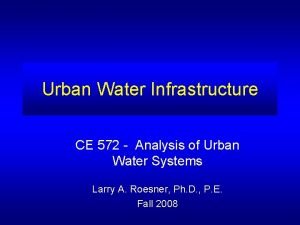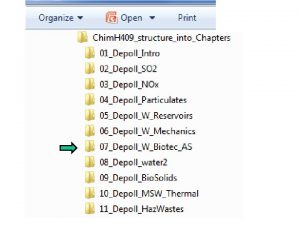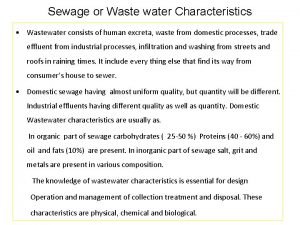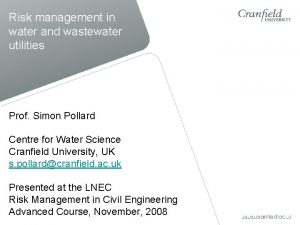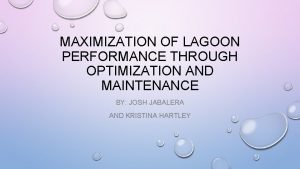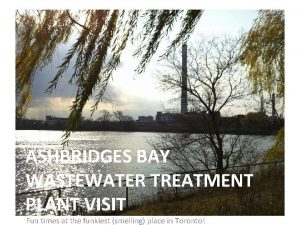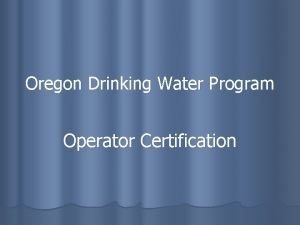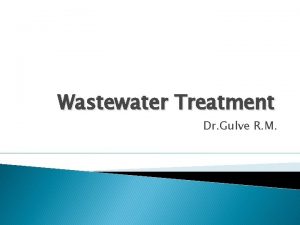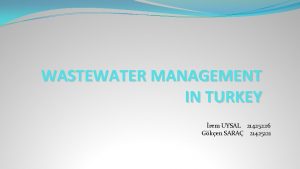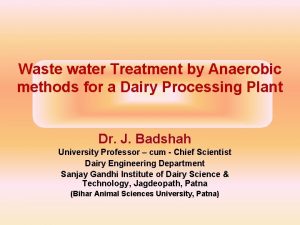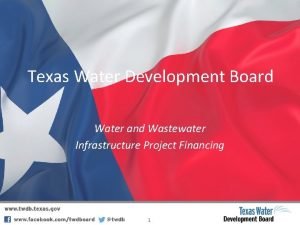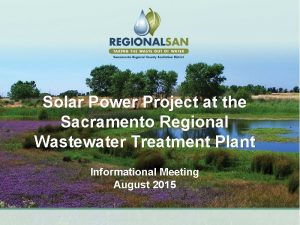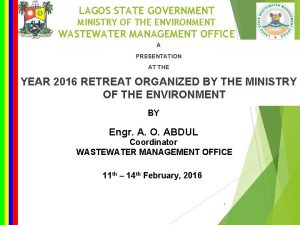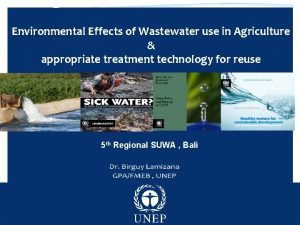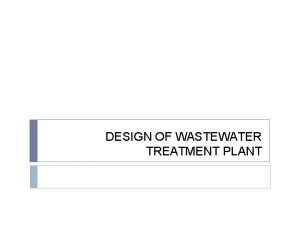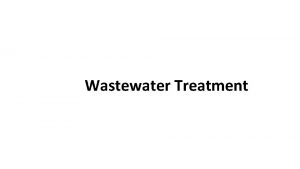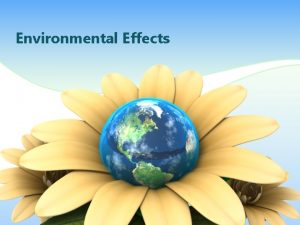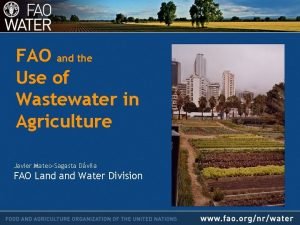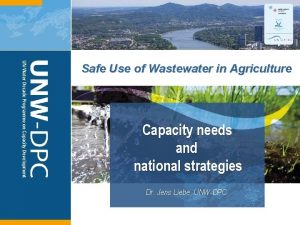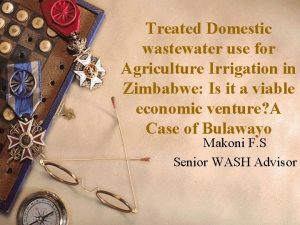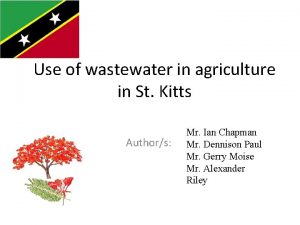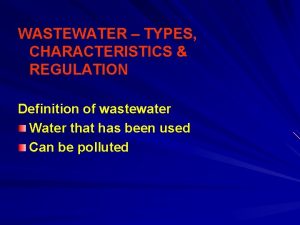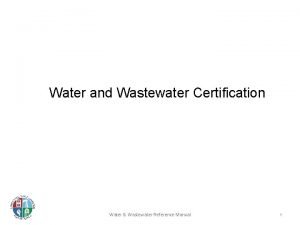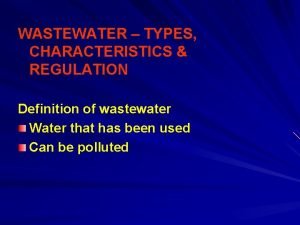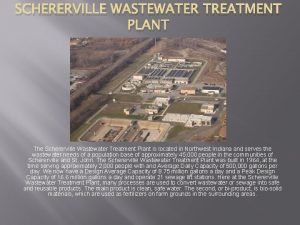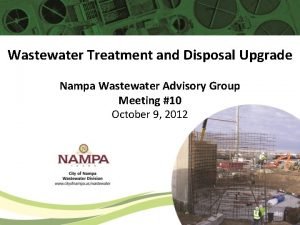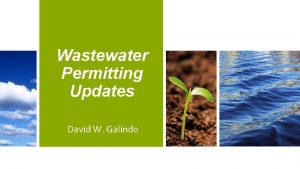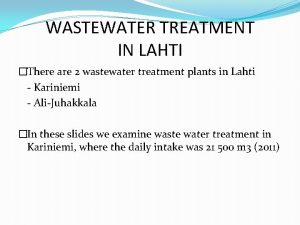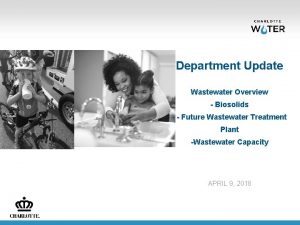Environmental Effects of Wastewater use in Agriculture appropriate

























- Slides: 25

Environmental Effects of Wastewater use in Agriculture & appropriate treatment technology for reuse 5 th Regional SUWA , Bali

“Sick Water” Definition of Wastewater A combination of one or more of: - domestic effluent consisting of blackwater (excreta, urine and faecal sludge) and greywater (kitchen and bathing wastewater); - water from commercial establishments and institutions, including hospitals; - industrial effluent, stormwater and other urban run-off; - agricultural, horticultural and aquaculture effluent, either dissolved or as suspended matter (definition adapted from Raschid-Sally and Jayakody, 2008)

Wastewater………a global issue? UNEP/GEF WIO-La. B Project 3

Wastewater management…. a big challenge Sewage systems are lacking, underdimensioned or decayed

Impacts of wastewater use in agriculture…… - Water security - Ecology - Ecosystem Services - Biodiversity • • Loss of food security Loss of fisheries, livelihoods Loss of blue carbon sinks Economic loss : • Healthy reefs can produce up to 35 tons of fish/km 2/year

Dead zones are spreading……… • Dead zones are now thought to affect more than 245 000 km 2 of marine ecosystems, predominantly in the northern hemisphere (Diaz and Rosenberg, 2008) UNEP/GEF WIO-La. B Project 6

Impacts on climate Change • High-intensity rainfall events leading to surface runoff and transport of salts and contaminants from soils irrigated with untreated or inadequately treated wastewater to nearby good soils irrigated with freshwater or rain-fed • Wastewater generates methane (21 times more powerful than CO 2) and nitrous oxide (310 time more powerful than CO 2). • CH 4 & NO 2 will rise 25% and 50% respectively in just a decade • Nutrients increase acidification of freshwater

Simplified scheme of agricultural wastewater use & effects on environment (adapted from WHO Guidelines) Evaporation Aquatic plants Sewage Industria l discharg e Aquaculture Storage dam WW treatment plan (in developing countries) Sewage system Aquatic plants Infiltration Sprinkler s Irrigation channels Lake Irrigation drainage Soils (retains metals, organic matter & phosphorus) Compounds & water absorption by plants Cattle consuming irrigated crops Infiltration Water + salts Aquifer Consumer Crops Cattle Water

But, wastewater is a needed resource…. .

Shortcutting the trends…. . a must Trends in industrialized countries reversed but are on the increase in developing countries a) Innovative water technology • Reduce the discharge of WW, treat & re-use b)Inventive governance & management • Intelligence water use: Different water uses need different water Quality • Promote the 3 R approach. Reduce-remediate-reuse

A need for decentralised Technologies. . • Septic Tanks, Constructed Wetlands, Composting Toilets, Biodigestor, Anaerobic Filter, Duckweed Lagoons • Collection, treatment, and final disposition of the WW on/or close to the location; • Useful in treating wastes from residences, households, small villages, isolated communities, etc. Advantages for decentralized systems: Economy of structural arrangements such as transportation, reservation and elevation; Possibility for reuse of the effluent and potentiality for aquifer recharging; A problem in a unit doesn’t collapse the whole system; Development of the local potentialities: small systems can be designed, built and managed by local professional, improving the local economy.

Ecological Sanitation (Eco. San) Stages (or Phases) Waste segregation and possible utilization options. (UNESCO/IHP & GTZ, 2006)

Ecological Sanitation (Eco. San) • Ecological Sanitation is a decentrilised sanitation system that understands human excreta, organic wastes and wastewater as a resource (not as a waste) with high potential for reuse and recycling. • Eco. San systems enable a complete recovery of nutrients in household wastewater and their reuse in agriculture. They also help preserve soil fertility and safeguard long-term food security. Moreover, they minimise the consumption and pollution of water resources.

Septic Tank • This system consists of a closed, often prefabricated tank and is usually applied for primary sewage treatment. The treatment consists of sedimentation, flotation and digestion procedures. • Septic tank is designed to receive all kinds of domestic wastes (kitchen, domiciliar laundries, washrooms, latrines, bathrooms, showers, etc) and it is economically viable to attend to 100 inhabitants. • The aim of primary treatment is to separate out heavy constituents (suspended solids) and particularly light constituents (floating solids and scum) from the sewage. • Due to its low treatment efficiency in terms of nutrient removal, a secondary treatment is recommended to polish the final effluent.

Constructed Wetland • Constructed Wetlands are man-made systems which aims to simulate the treatment processes in natural wetlands by cultivating emergent plants e. g. reeds (Phragmites), bulrushes (Scirpus), and cattails (Typha) on sand, gravel, or soil media. Constructed wetlands can serve the same small communities as natural wetlands and can be incorporated into the treatment systems for larger communities as well; • They are subdivided, basically, into two wide groups: (i) Surface Flow (the water or sewage flows through the soil surface); and (ii) Subsurface Flow. (Vertical and Horizontal Flow) •

Subsurface Vertical Flow Constructed Wetland (SVFW) • In SVFW the wastewater is loaded onto the planted filter bed’s surface. The pollutants are removed or transformed by microorganisms that are attached to the filtersand the plants’ root system. • Due to the biofilm presents in the filter material, and high Oxygen concentration in the system, vertical flow systems have been applied for both BOD 5 and SS removal and nitrification promotion; • However, it is important ensure that the filter is not saturated or covered with water in order to secure a high oxygen level in the filter.

Subsurface Horizontal Flow Constructed Wetland (SHFW) • In SHFW the sewage is uniformly fed in the inlet work and due to a longitudinal slight slope (~1%) the liquid flows through the pores of the filter bed until it reaches the outlet work. • SHFW usually provide high treatment effect in terms of removal of organics (BOD 5, COD) and suspended solids (SS). The removal of nitrogen and phosphorus is lower but comparable with conventional treatment technologies which do not include special nutrient removal step.

Composting Toilets • • A composting toilet system contains and processes excrement, toilet paper, carbon additive, and sometimes, food waste. As a nonwater-carriage system, a composting toilet relies on unsaturated conditions where aerobic bacteria break down waste. • • • When exposed to an unfavorable environment for an extended period of time, most pathogenic microorganisms will not survive. However, caution is essential when using the compost end-product and liquid residual in case some pathogens survive. The composting unit must be constructed to separate the solid fraction from the liquid fraction and produce a stable, humus material with less than 200 MPN per gram of fecal coliform. If sized and maintained properly, a composting toilet breaks down waste 10 to 30% of its original volume.

Biogas Digestor • • Biogas latrines and communal biogas plants are, in principle, a more advanced form of the septic tank system. When human excreta is combined with animal and agricultural wastes and water, it will give off gas as it decomposes. The mix of gases produced is called ‘biogas’ which can be used for cooking and lighting. Biogas plants typically store the wastes for about 30 days which can remove some of the pathogenic organisms but by no means all.

Anaerobic Filter • Anaerobic filters are used for wastewater with a low content of suspended solids (e. g. after primary treatment in septic tanks) and narrow COD/BOD ratio. Biogas utilisation may be considered in case of BOD > 1. 000 mg/l. • The anaerobic filter, also known as fixed bed or fixed film reactor, includes the treatment of nonsettleable and dissolved solids by bringing them in close contact with a surplus of active bacterial mass. • The larger the surface for bacterial growth, the quicker is the digestion.

Duckweed-Based Wastewater Stabilizations Ponds • • In general, duckweed ponds are used to treat domestic or agricultural wastewaters. Lemnaceae have the greatest capacity in absorbing macro-elements (e. g. nitrogen, phosphorus, potassium, calcium, sodium and magnesium among others); • • Effluents with both a high BOD and nutrient load may require adequate primary treatment to reduce the organic load. Plants must be harvested regularly in order to prevent dead plants forming bottom sludge.

Electricity generator by Biogas CH 4 Methane Combustion= CO 2 Swine waste Food CO 2 Duckweeds Lagoon

Conditions for success: Targeted and sustained investments are necessary to: -Reduce volume and extent of water pollution -Capture water once polluted -Treat polluted water for return to environment -Safely reuse and recycle ww conserving water & nutrients -Provide a platform for the development of new and innovative technologies & management practices social, economic and environmental dividends exceeding original investments

Conditions for success: A. Tackle immediate consequences • Adopt a multi-sectoral approach • Use a cocktail of innovative approaches • Innovative financing B. Thinking must be long-term: • plan wastewater management against future scenarios. • Solutions must be socially and culturally appropriate, as well as economically and environmentally viable into the future. • Education must play a central role From the Sick Water report

THANK YOU
 Use appropriate tools strategically
Use appropriate tools strategically Form phrases. use appropriate ones to label the pictures
Form phrases. use appropriate ones to label the pictures Language
Language Social effects of natural disasters
Social effects of natural disasters Environmental impacts of tidal energy
Environmental impacts of tidal energy Conclusion of air pollution
Conclusion of air pollution Mh 605
Mh 605 Wastewater treatment purpose
Wastewater treatment purpose Aquaculture wastewater treatment system
Aquaculture wastewater treatment system Wastewater treatment process primary secondary tertiary
Wastewater treatment process primary secondary tertiary Wastewater distribution system
Wastewater distribution system Typical composition of untreated domestic wastewater
Typical composition of untreated domestic wastewater Physical characteristics of wastewater
Physical characteristics of wastewater Risk management for water and wastewater utilities
Risk management for water and wastewater utilities Optimize wastewater lagoon
Optimize wastewater lagoon Ashbridges bay treatment plant
Ashbridges bay treatment plant Oregon water treatment certification
Oregon water treatment certification Peak hourly flow wastewater
Peak hourly flow wastewater Municipal wastewater treatment
Municipal wastewater treatment Agricultural wastewater treatment technologies
Agricultural wastewater treatment technologies Anaerobic wastewater treatment
Anaerobic wastewater treatment Wastewater infrastructure design in texas
Wastewater infrastructure design in texas Sacramento regional wastewater treatment plant
Sacramento regional wastewater treatment plant Lagos waste water
Lagos waste water Agricultural wastewater treatment technologies
Agricultural wastewater treatment technologies Detention time in sedimentation tank
Detention time in sedimentation tank
